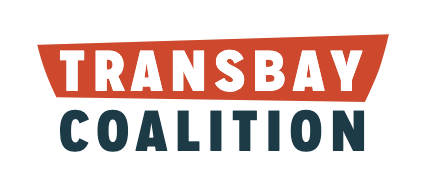This week, SamTrans and VTA are considering next steps to speed buses in San Mateo and Santa Clara Counties.
Wednesday: SamTrans ECR Bus Speed and Reliability Study
Buses on El Camino Real could travel 25-30% faster compared to 2019 travel times along the 25 mile El Camino Real corridor if improvements in a new SamTrans study are implemented.
On Wednesday at its monthly board meeting starting at 2pm, the SamTrans board is slated to approve the SamTrans ECR Bus Speed and Reliability Study.
The improvements would save up to 45 minutes for someone travelling the entire route (though most people use SamTrans for trips up to 5-7 miles). This would allow SamTrans to save up to 60 bus service hours per day and redeploy up to three operators – allowing SamTrans to provide more service for its budget.
The recommendations include further study of three priority bus lane segments spanning South San Francisco-northern Burlingame, San Mateo, and San Carlos, and other transit priority treatments such as bus bulbs and queue jumps.
The full suite of improvements carries a price tag of $80 to $100 million. As a first step, SamTrans will get started with “bus stop balancing” for rollout in summer 2023.
The “bus stop balancing” entails relocating up to 25% of bus stops and reducing up to 20% of bus stops. SamTrans analysis found that 97% of riders wouldn’t be affected or would have to walk less than 5 minutes more to a new stop and 70% of survey respondents were willing to walk farther for faster bus service.
To accelerate these improvements SamTrans proposes to collaborate with agency partners, including cities and Caltrans to establish a transit-first policy for El Camino Real.
The meeting starts at 2pm, and the zoom link is here. The agenda item is likely to come up around 3pm.
VTA Policy Board Committee considers Transit Priority Policies
On Thursday at 4pm, VTA’s policy board committee is getting an update on transit priority policies to help speed buses in Santa Clara County. The Zoom link is here.
VTA buses have slowed dramatically in recent decades, costing the agency $70 million per year.
Like SamTrans and other agencies, a set of strategies can be used to speed buses, including bus stop balancing, transit signal priorities and queue jumps, and bus lanes. And similarly, the travel lane and signal priority strategy need the cooperation of the city.
Therefore, VTA will be discussing with its Policy Committee, who represent City Council members serving on the VTA board, the potential to have more cities adopt Transit First policies, potentially modeled after the work that San Jose has done.
The City of San Jose adopted a Transit First policy last year, committing to actions to speed transit when they upgrade streets, and creating a toolkit for improvements to speed buses, and improve safety for people walking and bicycling.
This week: SamTrans and VTA consider transit priority and transit first policies
This week, SamTrans and VTA are considering next steps to speed buses in San Mateo and Santa Clara Counties.
SamTrans ECR Bus Speed and Reliability Study
Buses on El Camino Real could travel 25-30% faster compared to 2019 travel times along the 25 mile El Camino Real corridor if improvements in a new SamTrans study are implemented.
On Wednesday at its monthly board meeting starting at 2pm, the SamTrans board is slated to approve the SamTrans ECR Bus Speed and Reliability Study.
The improvements would save up to 45 minutes for someone travelling the entire route (though most people use SamTrans for trips up to 5-7 miles). This would allow SamTrans to save up to 60 bus service hours per day and redeploy up to three operators – allowing SamTrans to provide more service for its budget.
The recommendations include further study of three priority bus lane segments spanning South San Francisco-northern Burlingame, San Mateo, and San Carlos, and other transit priority treatments such as bus bulbs and queue jumps.
The full suite of improvements carries a price tag of $80 to $100 million. As a first step, SamTrans will get started with “bus stop balancing” for rollout in summer 2023.
The “bus stop balancing” entails relocating up to 25% of bus stops and reducing up to 20% of bus stops. SamTrans analysis found that 97% of riders wouldn’t be affected or would have to walk less than 5 minutes more to a new stop and 70% of survey respondents were willing to walk farther for faster bus service.
To accelerate these improvements SamTrans proposes to collaborate with agency partners, including cities and Caltrans to establish a transit-first policy for El Camino Real.
The meeting starts at 2pm, and the zoom link is here. The agenda item is likely to come up around 3pm.
VTA Policy Board Committee considers Transit Priority Policies
On Thursday at 4pm, VTA’s policy board committee is getting an update on transit priority policies to help speed buses in Santa Clara County. The Zoom link is here.
VTA buses have slowed dramatically in recent decades, costing the agency $70 million per year.
Like SamTrans and other agencies, a set of strategies can be used to speed buses, including bus stop balancing, transit signal priorities and queue jumps, and bus lanes. And similarly, the travel lane and signal priority strategy need the cooperation of the city.
Therefore, VTA will be discussing with its Policy Committee, who represent City Council members serving on the VTA board, the potential to have more cities adopt Transit First policies, potentially modeled after the work that San Jose has done.
The City of San Jose adopted a Transit First policy last year, committing to actions to speed transit when they upgrade streets, and creating a toolkit for improvements to speed buses, and improve safety for people walking and bicycling.
